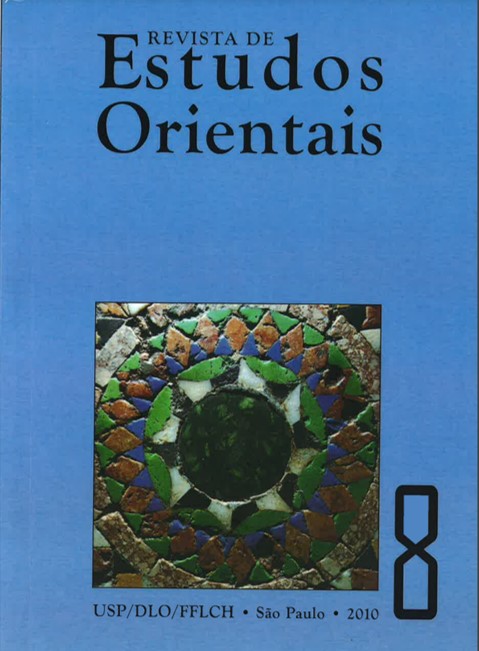As ferramentas usadas para a formação neológica na língua árabe: a terminografia das línguas de especialidade como objeto de estudo
DOI:
https://doi.org/10.11606/issn.2763-650X.i8p75-90Palavras-chave:
Terminology, Arabic, NeologismResumo
The expansion of the Arabic language to beyond its historical borders followed the Islamic territorial conquest. The contact with the pockets of Hellenic culture, revealed a terminological vacuum in the lexicon of those Bedouins from the Arabian Peninsula,
as there was no technical vocabulary to express the notions already consecrated in the languages of the conquered cultures. The same situation is repeated in the "recent" technological invasion from the western world which led to the uncontrollable formation of neologisms, and the subsequent creation of the Language Academies in the different Arab nations to regulate the incorporation of new terms to the lexicon. The Arabic language reacted in different ways to the foreign concepts brought in by these new ideas and concepts. Their addition to the lexicon was done through the tools explored in this article: ichtiqãq/ morphologic derivation, /majaz/ semantic broadening, /ta'rib/borrowing (literally "arabization"), and /naht/ compounding.
Referências
ADAMSON, P. (Org). The Cambridge companion to Arabic Philosophy. Cambridge: Cambridge University Press, 2005.
AL-QAHTANI, S. Arabization in written discourse in Saudi Arabia. Muncie/ID, 2000. 247 p. Dissertação (Graduate School) - Ball State University.
AL-QINAI, J. Morphophonemics of loan - Words in translation. In: Majalla Al-lisan al-arabi, 50. pp. 03-34. Rabat: Departamento de Coordenação Permanente, 2001.
ARYAN, R. Arabic roots. Dominguez Hills, CA. 2001. 35 p. Dissertação (Teaching English as a Second Language) - California State University Dominguez Hills.
AT-TARZI, I. The Cairo Language Academy in its 50th anniversary. Cairo: Cairo Language Academy Press, 1999.
BALASI, M. Annaht fi alloga alarabiya [A composição lexical na língua árabe, Majalla Al-lisn al-arabi, 47 (1). pp. 275-286. Rabat: Departamento de Coordenação Permanente, 1999.
CHEJNE, A. The Arabic Language. Minnesota: University of Minnesota Press, 969.
DEMAI, F. M. Um dicionário terminológico da área de ortopedia técnica: descrição e análise. São Paulo, 2006. 390 p. Dissertação (Semiótica e Linguística Geral) - Faculdade de Filosofia, Letras e Ciências Humanas, Universidade de São Paulo.
EL-KHAFAIFI, H. M. The role of the Cairo academy in coining arabic scientijic teru an historical and linguistic evaluation. Utah, 1985, 215 p. Tese de doutoramento East Studies) - University of Utah Graduate School.
EL-MOULOUDI, A. Arabic language planning: The case of lexical modernization. Washington, D.C., 1986. 321 p. Tese de doutoramento (Linguística) - Graduate School, Georgetown University.
ESPOSITO, J. The Oxford history of Islam. New York: Oxford University Press, 1999.
FERREIRA, A. B. H. Dicionário Aurélio eletrônico - século XXI. Versão 3.0. São Paulo: Lexikon Informática, 1999.
KENNEDY-DAY, K. Books of definition in Islamic philosophy: The limits of words. London: Routledge, 2003.
KHAMLOUSSY, A. Commented translation of an excerpt from Hunayn Tbn Ishaqs epistle to his patron 'ali Ibn Yahya on the translations of Galen. Ottawa, 1994. 111 p. Dissertação (School of Translation and Interpretation)- University of Ottawa.
LONGYEAR, C. Linguistics, In: MICROSOFT CORPORATION, Microsofio Encarta Encyclopedia. Version 9.0.0.0702. Redmond, WA: Microsoft, 2000.
MATTHEWS, C. M. Words. London: Lutterworth Press, 1979.
TARAZI, F. Al-ichtiqãq. Beirut: Librairie du Liban Publishers, 2005.
VERSTEEGH, K. Landmarks in linguistic thought I1: The arabic linguistic tradition. London: Routledge, 1997.
WEHR, H. Dictionary of Modern Written Arabic. Ithaca, NY: Spoken Language Services, 1979.
Downloads
Publicado
Edição
Seção
Licença
Copyright (c) 2022 Elias Mendes Gomes

Este trabalho está licenciado sob uma licença Creative Commons Attribution-NonCommercial-ShareAlike 4.0 International License.









